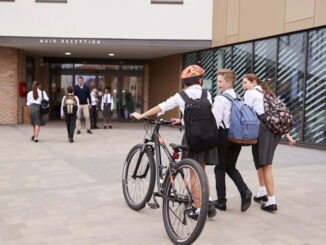
As reported by The Guardian, more than 90 English primary schools are to close or are at risk of closure because they are more than two-thirds empty, according to Guardian analysis of government data
A combination of falling birth rates and the urban exodus of young families in the face of rising housing and childcare costs, mean many primary schools are having their numbers – and associated funding – drop, with some struggling to keep their doors open as a result.
The analysis showed 88 primary schools in England were more than two-thirds empty last year, leaving them in danger of closure. On average, the vacancy rate – the proportion of unfilled places – recorded by the 156 schools that have closed since 2009-10 in their last year of operation was 66%.
A further four primary schools were already proposed to close. The analysis deliberately excludes schools that opened in 2021, as the process to fill places at a new school can take some time.
Across England, there were more unfilled primary school places than in any year since 2009-10, the equivalent to 570,000 pupils, or 11.5% of total capacity.
The Department for Education (DfE) is expecting the number of pupils at state-funded schools to decline by 944,000 over the next decade.
Jon Andrews, the head of analysis at thinktank the Education Policy Institute, said the number of pupils was already starting to fall in primary schools.
“That peaked in 2019 and it’s fallen by about 0.5%,” he said. “In secondary schools it will peak in the next academic year and then start to fall after that.
“Most of the funding that schools get is on a per-pupil basis, so when numbers start to fall, their overall funding falls. Government will still be able to say, we’re maintaining per-pupil funding; but that doesn’t make much difference if you’re a headteacher who’s lost £30,000 a year.”
The problem was most pronounced in urban centres: close to half of the at-risk schools identified in the analysis were located in cities and towns. A quarter of them were in rural villages and a further one in six in more isolated parts of the country.
Local authorities across the UK are wrestling with how to manage falling pupil rolls. Birmingham city council recently announced plans to cut the number of primary school places by more than 300 from September 2024. It plans to achieve this by reducing the number of classes, rather than closing schools.
The Local Government Association said the challenges were compounded by the fact that local authorities had no direct control over academy schools.
An LGA spokesperson said: “Councils should be given powers to reduce the size of, or close academies – as they do with maintained schools – where there is evidence of a significant drop in demand and a need to ensure a school remains financially viable.
“Councils should also be given the responsibility for in-year admissions, and powers to direct all schools to accept local children on to their roll, where appropriate.”
Most of the schools with high vacancy rates were in the south-west and south-east.
Across England, the number of children enrolled had fallen in more than a quarter of primary schools, with some schools (80) registering decreases of more than 50% in pupild since 2009-10.
Almost half of the schools in inner London and a third of those in the south-west of England had fewer pupils in 2021-22 compared with 2009-10 (or the first year for which data is available). In contrast, two-thirds of the schools in the north-west and the West Midlands had had an increase in pupil population.
The vacancy rate is not the only indication of the risk of closure, as some schools may not have had problems filling their places but decided to close for other reasons, including the size of the reception year.
The number of reception-year pupils had fallen between 2019-20 and 2021-22 in almost half of the primary schools that offered places, with about 2,000 of them (13%) below the replacement rate, meaning the number of children in reception is smaller than their year 1 and year 2 cohorts.
Since 2009, about 160 primary schools had closed and about 570 had merged, analysis of the DfE figures showed. During the 2021-22 academic year there were 16,791 primary schools in England.
It is estimated that the number of pupils enrolled in the reception year will decrease by five per cent across England by 2026-27, with some local authorities seeing their youngest pupils down by almost 20%. These include Lambeth in London, Brighton and Hove, York and the Humber.
In some areas it is estimated the number of reception-age children could halve within the next five years.
A DfE spokesperson said: “We have created almost 1.2m places since 2010, the largest increase in school capacity in at least two generations, and work closely with local authorities to make sure they offer a school place to every child in the country and support the long-term viability of their schools.”




Be the first to comment